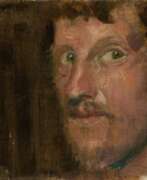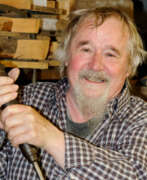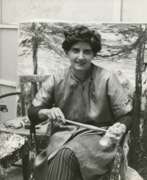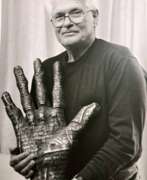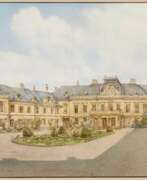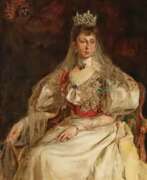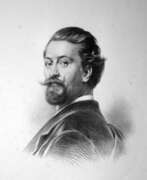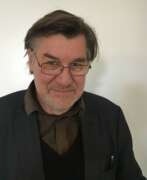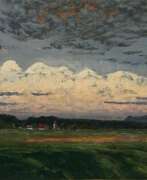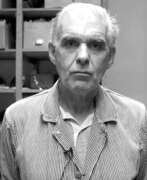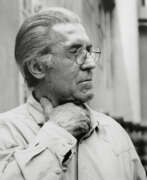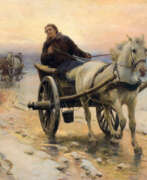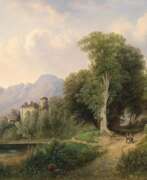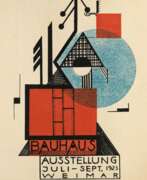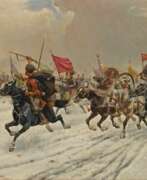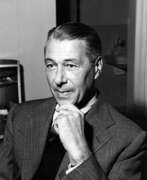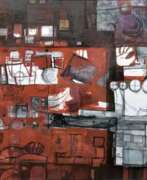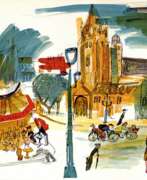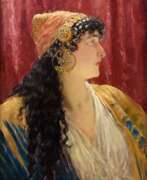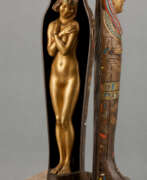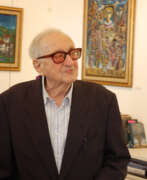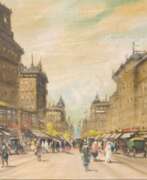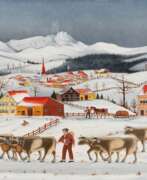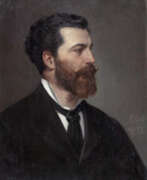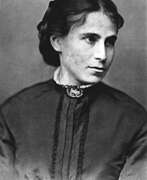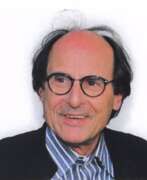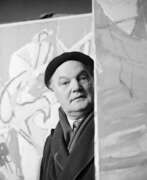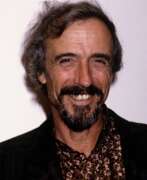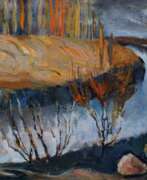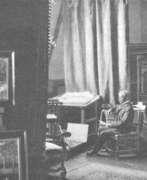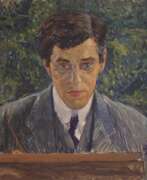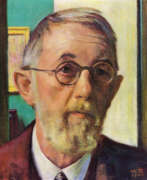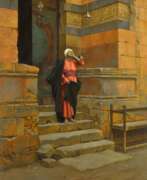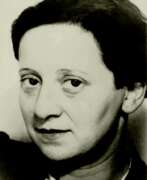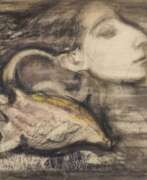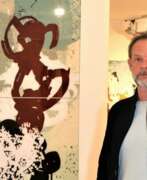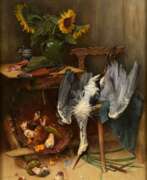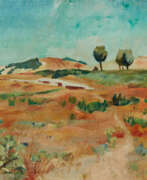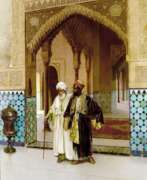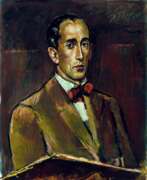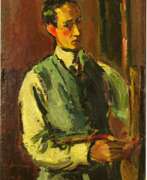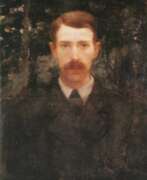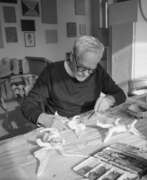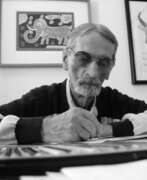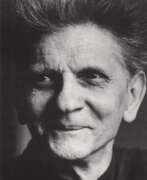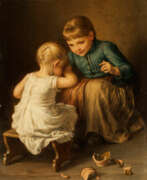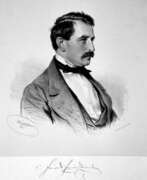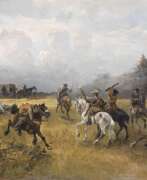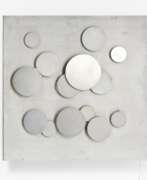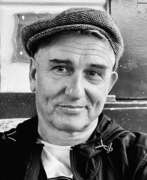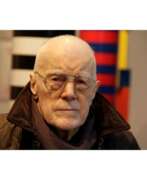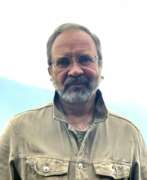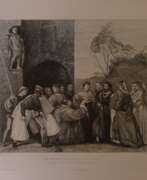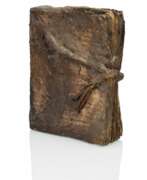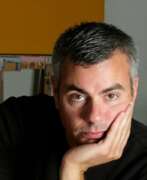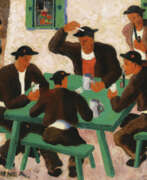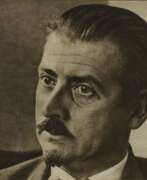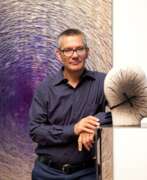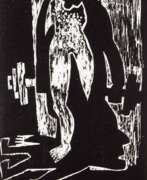Austria 20th century
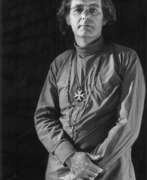

Marc Adrian is an Austrian conceptual artist and filmmaker.
Adrian studied sculpture at the Vienna Academy of Fine Arts, from 1953 he became interested in cinema, kinetics, rhythmic interference, problems of optical structures, etc. Adrian is considered one of the pioneers of film-oriented media art. He specialized in kinetic objects, anti-cinema and computer art.
Marc Adrian has taught at various universities in Europe and lectured to American students.
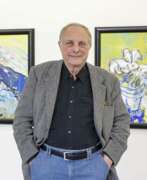

Christian Ludwig Attersee, born Christian Ludwig, is an Austrian media artist living in Vienna and Semmering in Lower Austria.
The artist took his middle name, Attersee, from the area where he spent his youth. He studied at the Vienna Academy of Applied Arts and his work was characterized early on by flamboyant sexualization. He is known not only as a visual artist, but also as a musician, writer, object artist, designer, stage designer and film director. In the 1960s and 1970s he also created series on themes of food, everyday objects, beauty and cosmetics.
Attersee is known above all as one of the leading representatives of objective painting in Europe in the last 50 years. In the second half of the seventies he became the founder of the "New Austrian Painting". From 1990 to 2009, Atterse held a chair at the Vienna University of Applied Arts.


Moritz Bauernfeind was an Austrian painter, graphic artist, illustrator and cartoonist.
Moritz studied at the Academies of Fine Arts in Vienna and Munich, then at the Académie Julian in Paris, early landscapes painted in the style of Impressionism.
Bauernfeind gained fame in the early 20th century as an illustrator of political satire, notably in Meggendorfer's Humorous Notes and Der Flo. Between 1900 and 1905 he published more than 200 satirical drawings in Der Scherer and Simplicissimus, and in 1909 a series in the Illustrirten Zeitung in Leipzig. And color illustrations for fairy tales and legends were eagerly published by juvenile and many other publications. Bauernfeind's fantastic genre images with stylized figures and a touch of burlesque attract with their unusualness and mystery.
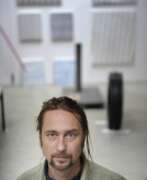

Thomas Baumann is an Austrian artist and filmmaker living and working in Vienna.
Baumann studied at the Academy of Fine Arts in Vienna, but is engaged in a wide range of creative endeavors. He mixes categories of art and challenges values and forms. Through his electronic sculptures, machine paintings, films and installations that give visitors their own freedom of action, Baumann searches for structural connections between material and mental spaces.
For example, one of his spatial sculptures with a pre-programmed score: silver foil moves in a certain rhythm, it straightens, contracts or expands. The sculpture is constantly changing its form - it destroys the shape it has just taken to create a new one. Baumann also constructs artworks from floor ropes, swings, doors, organ pipes and other objects. Many of his works contain acoustic elements. Since 1990, Bauman has also made films and videos.
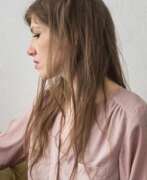

Alexandra Baumgartner is a German artist working in various fields of art: collage, installation, painting and object art. Her work is most often based on found photographs, as well as on furniture and everyday objects. Historical portraits and images are cut out, partially painted over and combined, putting mostly anonymous source material into new contexts.


Alban Berg, full name Alban Maria Johannes Berg, was an Austrian composer, representative of expressionism in music, teacher and music critic.
A meeting with composer Arnold Schoenberg (1874-1951) in September 1904 played a decisive role in Berg's life. The latter saw talent in the young man and taught him free of charge for six years. In 1907 Berg performed his "Sonata for Piano" for the first time.
Alban Berg was very self-critical and worked on pieces for a long time. He composed orchestral music (including "Five Orchestral Songs," 1912), chamber music, songs, and two groundbreaking operas, "Wozzeck" (1925) and "Lulu" (1937). "Wozzeck," the most frequently performed theater work in the atonal idiom, is Berg's first attempt to address social issues within the framework of opera. However, its premiere turned into a scandal, with critics even calling the composer a musical fraud.
Only a few years after his death, Alban Berg was widely recognized as a composer of expression. He broke with tradition and mastered a radical technique, but at the same time he combined the old and the new and created, together with Schoenberg and Webern, the New Viennese School of the 20th century. Alban Berg was also an outstanding teacher of composition.
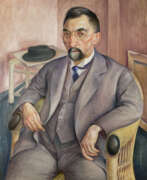

Albert Birkle was a German and Austrian painter, decorator, muralist and glass painter.
Albert's father was the artist Karl Birkle, from whom he received his initial training as a decorative painter, then studied at the Hochschule für die bildenden Künste (now the Berlin University of the Arts). Birkle developed a unique style based on Expressionism and the New Objectivity/Neue Sachlichkeit style. His subjects were lonely, mystical landscapes, typical scenes of Berlin in the 20s and 30s, portraits and religious scenes.
In 1932, fleeing the National Socialists, Albert Birkle moved to Salzburg, Austria, but nevertheless represented Germany at the Venice Biennale as early as 1936. In 1937, his work was declared "degenerate" in Germany and withdrawn from state collections. In 1946, Birkle was granted Austrian citizenship and began working on religious frescoes and decorative windows for various churches and oil paintings. The 1950s and 60s were filled with intense creativity in glass painting.
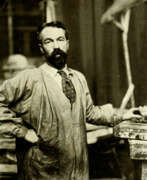

Karl Bitter was an American sculptor of Austrian origin. He is known as a master of neoclassicism in the late 19th and early 20th centuries. Bitter became famous for his decorative relief decorations on the facades of municipal buildings and private residences. Among the creative achievements of the master are also numerous monuments to prominent compatriots.
Karl Bitter was one of the most successful immigrant artists in U.S. history. During his lifetime, he received many awards from the American government, and shortly before his tragic death at the age of 47, he was elected president of the National Society of Sculptors of the United States.


Herbert Brandl is one of the most famous Austrian expressionist artists. He achieved success through his large-format works.
Landscape as a theme was always dominant in his work, where pictorial abstraction and subjectivity alternate. Since the beginning of the new millennium, Brandl's passion for the monumentality of mountain landscapes has become increasingly evident. Using various formats and techniques, the artist has reinterpreted the theme of mountains, playing with expressive gestures, abstract colour spaces and massive forms.


Herbert Breiter was a German-born Austrian painter and lithographer. He is known, in particular, for his landscape paintings, his "atmospheric scenes" and for the many views of Salzburg, his adopted home city, that he produced. His surviving output also includes still lifes and portraits.


Arthur Brusenbauch was an Austrian painter. Arthur Brusenbauch learned from Johann Kautsky and then worked as a stage decorator himself. He studied in Vienna at the Staatsgewerbeschule and the Academy of Fine Arts, interrupted by military service and imprisonment. In 1920 he became a member of the Vienna Secession, and in 1939 he moved to the Künstlerhaus. In 1928 he had represented Austria in the art competitions of the 1928 Olympic Games. From 1937 to 1941 he participated in all major German art exhibitions in Munich with seven oil paintings. There, in 1939, Hitler acquired the picture of Melk an der Donau in festive decorations. Brusenbauch, who is attributed to late impressionism, dealt with fresco painting and graphics.
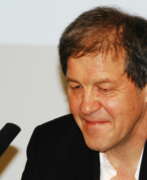

Ernst Caramelle is an Austrian artist. He is known for his conceptual art, which often involves the use of painting and drawing as a means of exploring the relationship between perception and representation.
Caramelle studied at the University of Applied Arts in Vienna and later taught at the Academy of Fine Arts Vienna. His work is characterized by a playful approach to art-making, often blurring the boundaries between painting, drawing, and installation.
Caramelle's work often involves the use of trompe-l'oeil techniques and other visual illusions, inviting viewers to question their perception of the art object and the space in which it is displayed. He frequently incorporates architectural elements into his work, creating site-specific installations that engage with the surrounding environment.
Caramelle has exhibited his work internationally, including at the Venice Biennale, the Documenta in Kassel, and the Museum of Modern Art in New York. He has also been awarded numerous awards and honors, including the Grand Austrian State Prize for Visual Arts in 2013.
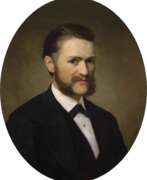

Eduard Charlemont was an Austrian painter.
After graduating from the Academy of Fine Arts Vienna, Charlemont traveled to many countries in central Europe and finally settled in Paris. In 1899 he won the gold medal at the Exposition Universelle, a World's Fair held in Paris.
Charlemont was also known for his murals. He painted three of the murals of the Burgtheater (the Austrian National Theatre in Vienna and one of the most important German language theatres in the world) totaling a length of about 55 meters.
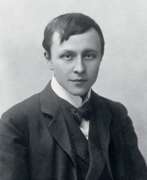

Alfred Kubin was an outstanding Austrian engraver, illustrator and writer, and a prominent representative of the Symbolic and Expressionist trends in the visual arts in the first half of the 20th century. Alfred Kubin's works are full of phantasmagoric and grotesque depictions of dreams, motifs of desolation and fear.
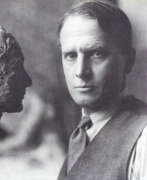

Ernesto de Fiori was a German artist of the first half of the twentieth century of Italian-Austrian origin. He is known as a sculptor, draughtsman, and secular portraitist and is considered one of the leading artists of the Weimar Republic.
Ernesto de Fiori made a name for himself as a sculptural portraitist in Berlin during the so-called "Golden Twenties". He portrayed such celebrities as movie actresses Greta Garbo and Marlene Dietrich, boxer Jack Dempsey, Field Marshal Paul von Hindenburg. In 1936, the artist emigrated to Brazil and took up journalism. In 1937, the Nazi campaign to expose "degenerate art" led to the removal of his sculptures and graphics from German museums.
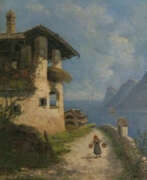

Gabriele Maria Deininger-Arnhard was a German-Austrian painter.
Deininger-Arnhard painted mostly landscapes from the Tyrolean and Bavarian regions, but also depicted rural interiors, in oil and watercolor. She was best known for her depictions of the Ötztal. According to her own account, she painted more than 1,000 large-format oil paintings. These may be found in collections in various cities in Germany, Tyrol, Vienna, Paris, Holland, Switzerland, the Czech Republic, Hungary and North America.


Georg Dinz is a contemporary Austrian artist. After studying at the Vienna University of Applied Arts, Dienz lives and works as a room and stage designer in the Viennese punk scene. Shortly after the fall of the Wall, Dienz moves to Berlin, where he takes part in various art projects in the wild post-reunification period. Today he concentrates on free painting in his studio in the former Berlin artist district of Prenzlauer Berg. Georg Dienz's works are stylistically characterized by a flat and clear application of paint and can be described as "reduced realism".


Josef Dobrowsky was an Austrian painter and member of the Zinkerbacher Artist Colony that lived and worked together at Lake Wolfgang until its dissolution after Austria was annexed by Germany, known as the Anschluss, in 1938.
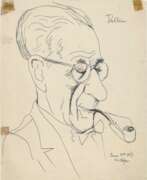

Benedikt Fred Dolbin, born Pollak, an Austrian press illustrator, studied at the Vienna University of Technology and worked for the construction company Waagner, Biro & Kurz during the First World War. He later moved to Berlin, where he worked as a press illustrator and book illustrator. Because of his Jewish origins, he was excluded from the Reich Press Chamber in 1933 and was banned from working in 1935. After emigrating to the USA, Dolbin continued his career His career as a draftsman continued, but he was unable to build on his earlier successes.
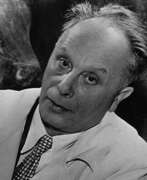

Georg Ehrlich was an Austrian and British sculptor and graphic artist.
At the School of Arts and Crafts in Vienna, Ehrlich mastered etching and lithography, and served in the Austrian army during World War I. He held his first solo exhibition in Munich in 1920 and won a reputation as a painter and printmaker. In 1920 he had his first solo exhibition in Munich and gained a reputation as a graphic artist working in an expressionist manner. Returning to Vienna in 1924, he began to work primarily as a sculptor in the realist style and actively participated in exhibitions.
In 1937 Ehrlich was awarded the Gold Medal at the World Exhibition in Paris, but in the same year he fled to England, and after the war, in 1947 he became a British citizen. Georg Ehrlich worked actively, creating numerous portrait and animalistic sculptures, as well as memorials, participating in numerous exhibitions. In 1963, Ehrlich became a Royal Academician.
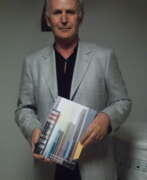

Albert Ennemoser is a contemporary Austrian artist. Traveled extensively throughout Europe, USA, Africa and Asia. In 1972 he immigrated to Ireland, then moved to Scotland. He studied painting at the Glasgow School of Art and Jordanhill College of Education. Worked as an illustrator for BBC-TV-Scotland and as a designer for NAEF in Switzerland. He received several awards and was artistic director of the Tiroler Literaturwettbewerb für Jugendliche. His work has been exhibited both nationally and internationally.
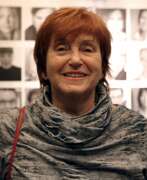



Eugen Felix, born as Veith Ehrenstamm was an Austrian painter.
He started his studies with Ferdinand Georg Waldmüller and continued in Paris with Léon Cogniet. Felix is particularly well known for his portraits, but he also did historic and mythological scenes.


Knopp Ferro (born Walter Hinterker in Bensberg) is an Austrian sculptor, painter and performance artist. He lives and works in Munich and in Inning am Ammersee.
His best-known works — both as an individual artist and as part of the artist group Jet Ferro — are now in international galleries and exhibition houses and have already been shown by invitation in the outdoor area of the documenta in Kassel.
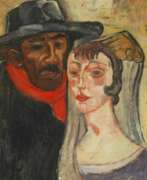

Michel Fingesten, a Czech-Austrian artist of Jewish origin, was an important graphic artist and designer of 20th century bookplates. In the world of bookplates he is often compared to Picasso, and he embarked on a varied artistic career.
Fingesten studied at the Academy of Fine Arts in Vienna, travelled the world and refined his craft in Munich. In 1913 he settled in Berlin and devoted himself to etching. In his private life he married and became a father, while his art flourished with contributions to silent films and over 500 bookplates. Fleeing Nazi persecution, he settled in Italy in 1935, but was interned there. After liberation, he returned to painting and died in Cerisano, Calabria in 1943.
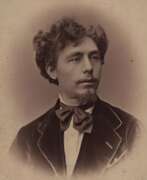

Ludwig Hans Fischer was an Austrian landscape painter, copper engraver, etcher and ethnologist. He was noted for his paintings of Oriental subjects, especially African and Indian women wearing traditional costume.
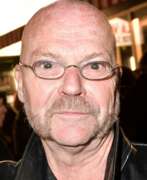

Wolfgang Flatz is a contemporary Austrian artist, stage designer, musician and composer. Currently lives and works in Munich, Germany.
After engaging with contemporary art movements such as Heppening and Viennese Actionism, Flatz creates works using a variety of media - painting, sculpture, performance, video, computer, film, photography, theatre, music, design and architecture. Subjects include voyeurism, the body, violence, aggression, pain, love, politics and audience interaction.
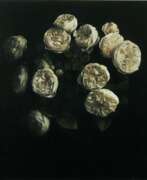

Norbert Fleischmann is an Austrian artist whose passion for painting can be called encyclopedic, because it encompasses a variety of styles and genres, motifs, painting styles and media influences, even forms of presentation and representation.
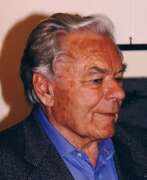

Paul Flora was an Austrian cartoonist, graphic artist, and illustrator known for his skill with pen and ink.
Flora's work has appeared in the famous New York Times and The Observer newspapers, and his drawings have graced the stamps of Liechtenstein and Austria. Paul Flora has been one of Europe's most famous illustrators since the 1960s.
He also produced books, films and sets.
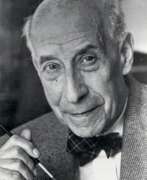

Joseph Frank was an Austrian and Swedish architect of Jewish origin. He worked with Oskar Strnad and was associated with the Vienna Circle. In 1933 he moved to Sweden, where he worked for the design company Svenskt Tenn for the rest of his life. In 1965 he was awarded the Grand Austrian National Prize for Architecture.


igmund Freud, born Sigismund Schlomo Freud, was an Austrian psychologist, psychiatrist and neurologist, the founder of psychoanalysis.
He graduated from the medical faculty of the University of Vienna, was engaged in self-education and numerous, cutting-edge for his time studies of the human psyche. The resulting psychoanalysis he created was both a theory of the human psyche, a therapy to alleviate its ills, and a tool for interpreting culture and society. Freud's psychoanalysis had a significant impact on psychology, medicine, sociology, anthropology, literature and art in the twentieth century.
Despite the sometimes harsh criticism of virtually all of his ideas and teachings, which continues almost a century after his death, Freud remains one of the most influential intellectual figures of our time.
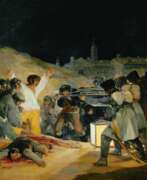

Hans Fronius was an Austrian painter and illustrator. His work is considered an example of "expressive realism," and he painted portraits, street scenes, and literary interpretations. Fronius was one of the first to illustrate stories by Franz Kafka, as well as works by Edgar Allan Poe and Robert Louis Stevenson.
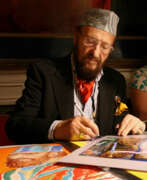

Ernst Fuchs was an Austrian painter, draftsman, printmaker, sculptor, architect, stage designer, composer, poet, and one of the founders of the Vienna School of Fantastic Realism. In 1972, he acquired the derelict Otto Wagner Villa in Hütteldorf, which he restored and transformed. The villa was inaugurated as the Ernst Fuchs Museum in 1988.
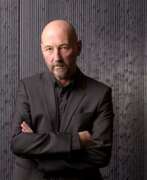

Jakob Gasteiger is an Austrian artist, representative of analytical painting, living and working in Vienna and in Weinviertel.
Gasteiger studied stage design at the University of Music and Performing Arts in Salzburg and attended the Institute for Teaching and Research in Graphic Arts. Since 2013, he has been working in the studio at Weinviertel. Jakob Gasteiger is considered a representative of analytical painting.
In his works he questions the parameters of painting, expanding and breaking the boundaries of graphics, painting and sculpture. The artist's most extensive group of works are predominantly monochrome paintings with relief structures, which are formed with the help of a comb spatula when applying paint to the background of the painting. As of late 2018, Gasteiger has expanded this group of works through the use of neon colors. He also creates aluminum sculptures and installations.
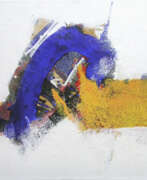

Roger Gressl is a contemporary Austrian painter. His overpaintings are well known. Gressl has been working as a freelance painter and graphic artist since 1987. His works have been shown in numerous solo exhibitions in Berlin, Krems, St. Pölten, Innsbruck, Vienna, Frankfurt, Heidelberg, Mannheim, Feldkirch, Bergamo, Wels and London. Since 1988 he has been regularly represented at international art fairs in Basel, Barcelona, Frankfurt, Florence, Ghent, Los Angeles and Nuremberg. Gressl's recognizability lies in the consistent use and treatment of his color combinations and the acrylic mixing technique used. The artist tries to achieve an effect through complementary colours, to form axes and knows how to create a closed, harmonious color composition based on aggressive colors using shades of gray and white.
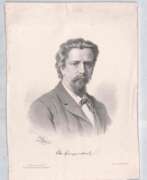

Christian Griepenkerl was an Austro-German painter of the last third of the 19th and early 20th centuries. He is known as a painter and teacher, a professor at the Vienna Academy of Fine Arts.
Griepenkerl created many paintings of historical subjects and themes from ancient mythology, and was also a successful portraitist. As a teacher, he was famous for having twice prevented the young Adolf Hitler from taking the entrance examinations to the Vienna Academy of Fine Arts.
